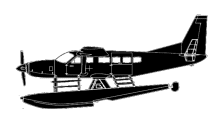Incident Overview

Description
The float-equipped Cessna Caravan had dropped of some RCMP Emergency Response Team (ERT) members at Teslin Lake. The aircraft was maneuvered for takeoff when it suddenly grounded on a gravel bar. The ERT members, working with the aircrafts maintenance engineer who had been called in, eventually managed to free the aircraft. They had been working for nearly seven hours to free the plane. At 23:50, after the engineer had pumped the floats, the pilot started the aircraft and taxied down the lake for a short distance before returning to start the takeoff run. The pilot took off downwind and passed over an RCMP boat at about 100 feet, then entered a steep climb. At the top of the climb, it stalled and yawed to the left. The aircraft descended and struck the water in a near-vertical attitude. The wreckage sank to a depth of 66 feet (20 m). FINDINGS AS TO CAUSES AND CONTRIBUTING FACTORS: “1. The pilot’s decision to depart from the unlit location was likely the result of the many psychological and physiological stressors encountered during the day.; 2. The pilot most likely experienced spatial disorientation precipitated by local geographic and environmental conditions and lost control of the aircraft. FINDINGS AS TO RISK: 1. Without a safety management program that routinely disseminates safety information, RCMP pilots may be inadequately sensitized to the limitations of decision making and judgement; 2. The RCMP had no current, concise standard operating procedures (SOPs) for its non-604 operations. Without useable SOPs, the pilots in some instances operate without clearly established limits and outside of acceptable tolerances.”
Primary Cause
Pilot decision-making under stress and spatial disorientation, potentially exacerbated by local geographic and environmental conditions.Pilot decision-making under stress and spatial disorientation, potentially exacerbated by local geographic and environmental conditions.Share on:





